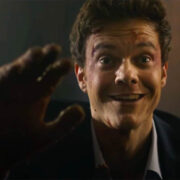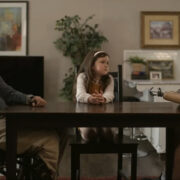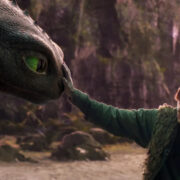NO TIME TO DIE Countdown: CASINO ROYALE 1967 Revisited
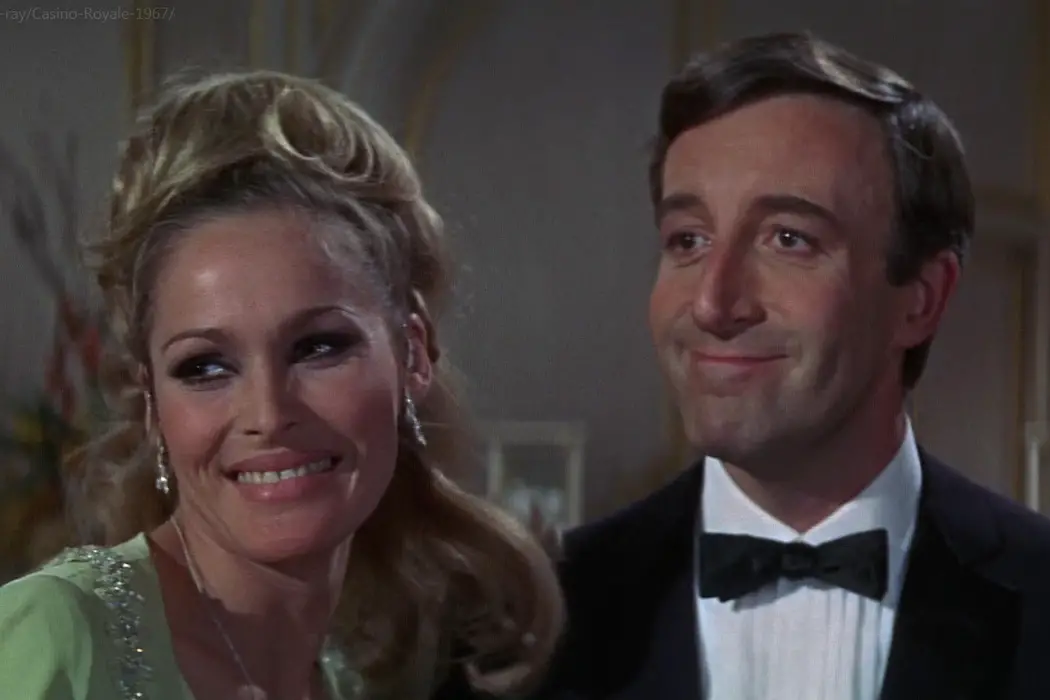
Movie lover & Los Angeles-based writer. BA in Film Criticism…
In the No Time To Die Countdown, Jake Tropila takes a look back at every Bond film – official and unofficial – in anticipation of the release of the latest entry.
It was only a matter of time before Bond got spoofed. Four films in and the franchise had grown to stratospheric heights, the likes of which were unprecedented. Everyone wanted a piece of the action, and being a world-famous superspy (a humorous contradiction in and of itself), 007 had a relatively large target painted on his back.
Spoof movies are a dime a dozen, and spy spoofs themselves are still relatively commonplace nowadays (i.e., The Spy Who Dumped Me). My issue with the subgenre is not its ubiquity; it’s that too many of them are often creatively bankrupt endeavors, and not worth investing the time at all. There are rare exceptions – ZAZ’s Top Secret! is amazing – but more often or not these are moronic, low-brow, and cheap-looking productions.
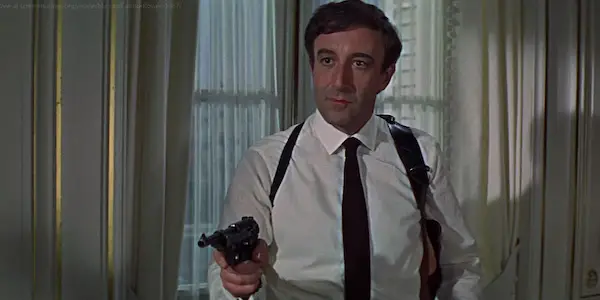
Enter John Huston. And Ken Hughes. And Joseph McGrath. And Robert Parrish. And Val Guest. And Val Guest again (he’s credited twice, I have no idea why). These five directors, plus an assortment of credited and uncredited writers (the final number may never be officially known, but it’s estimated to be upwards of two dozen) have slapped together the tonal mishmash and cinematic nightmare that is 1967’s Casino Royale, a film that was merely “suggested by the Ian Fleming novel.” It’s also our first “unofficial” entry we’ll be covering in Bond’s history. Erm, hooray?
Overlong, overstuffed, and overindulgent, Casino Royale ’67 reads like a terrible idea offscreen and plays like pure agony onscreen. With gaudy visuals, incoherent plot strands, and a guiding creative vision that appears to have been heavily influenced by a mountain of cocaine, I cannot recommend anybody sit through this movie once. I’ve now seen it three times, and I assure you, each watch has been more excruciating than the last, and now I get to dive into why that is. Fasten your safety harnesses and jetpack helmets, dear readers, it’s going to be a bumpy ride.
Too Many Cooks
For the sake of brevity (and my sanity), this revisit of CR’67 (referring to it just as “Casino Royale” feels like sacrilege when Daniel Craig’s inaugural entry exists) will likely run relatively short compared to my previous entries thus far. For however painful it is to sit through, I’m afraid I cannot muster much enthusiasm in discussing this very bad film. But I will certainly do my best.
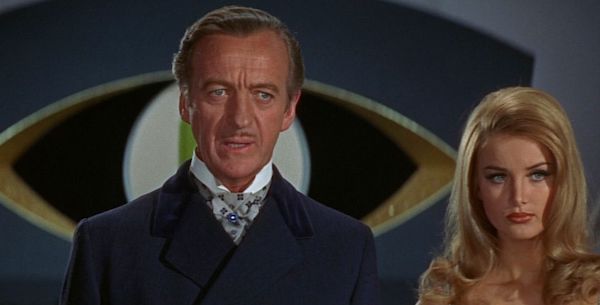
Our film begins with a lame stab at penile humor, where a man identified as “James Bond” (Peter Sellers) gawks at another man’s genitals in a public urinal to ensure his credentials are in order. Haha? Cue opening titles. A colorful montage of credits follows, and here is where I’ll offer a small bit of praise: Burt Bacharach’s lively score ain’t half bad. It’s sprightly, fun to listen to, and soon becomes the highlight of the entire picture. Shame.
Let’s save some time. The proper “James Bond” in this film is known as “Sir James Bond.” He’s played by David Niven, and has happily retired to a mansion in the middle of the woods, surrounded by a host of wild jungle cats. Sir James is called back into the line of duty by M (John Huston, director one of five), who advises that SMERSH has been eliminating fellow agents. Sir James finally agrees, but only after his mansion has been blown up by M, who blows off his toupee in the process (before promptly blowing himself up). To throw SMERSH off his scent, Sir James orders all agents in the field to change their name to “James Bond.” Are you laughing yet?
The obvious issue that plagues CR’67 is the clash of visions. The film never settles on what it wants to be, and instead, we are forced to endure what it is: a hodge-podge of half-baked, dire, and unfunny set-pieces that get beaten to the ground with their monotony. There’s no cohesion, no clever linking of the loose strands, nothing that makes the project worthwhile. Having five directors on hand does more harm than good – instead of working together to take down Bond, it’s as if each helmer constructed their own section of a 1,000 piece jigsaw puzzle, but were using different reference photos to complete their given portion, and once finished they threw all of their pieces into a damp box and forced the viewer to put everything together.
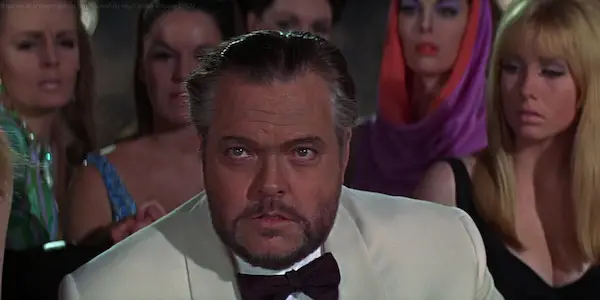
For instance, I mentioned above that Peter Sellers pops up in the pre-title sequence, but he all but disappears for the subsequent 45 minutes while we faff about with Niven’s Bond for what feels like an eternity. The elder Sir James deals with a drone strike, a drugged-out dinner party, scores of young ladies aching to bathe with him, and a particularly exhausting sequence wherein the agent is challenged by several bulky Scotsman to toss stone balls to each other until there is only one left standing (the joke here is that these burly men have trouble lifting the stones, but the pencil-framed Niven has no issue smashing one in half with his bare hands). It’s all so grueling to watch.
A Battle of Egos
The creative forces behind the film have established filmmaking pedigrees, but the talent in front of the camera are no slouches either. Niven, Sellers (who, between the Pink Panther series and Dr. Strangelove, was essentially on top of the world at this point), Woody Allen, Orson Welles, OG Bond Girl Ursula Andress, William Holden, Deborah Kerr, and John-Paul Belmondo appear in some form or another, but their talents are completely wasted as each actor attempts to out-mug and out-shtick one another.
If you’ve made it through the first act of CR’67, it admittedly becomes slightly easier to endure. Slightly. The sequences involving Sellers, Andress, and Welles are easily the strongest sections of the film, if only because they cull from Fleming’s titular novel directly. If you squint you can almost make out what this film could have been during these middle portions. They are also troubled by the offscreen feud between Sellers and Welles, and as a result the two do not appear in any shot together. Sellers ended up quitting the production altogether, and his sequences have clearly been hastily cobbled together by the available footage.
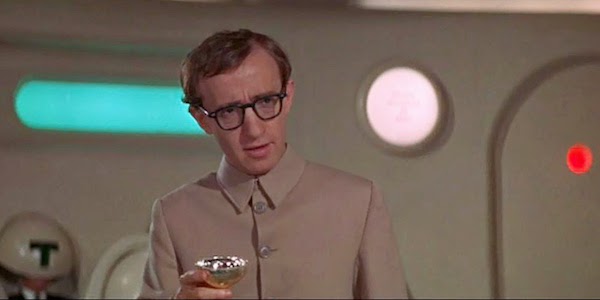
Woody Allen’s presence may also serve to be a deterrent to first-time viewers, but he does score one of the few genuine laughs in the film. As “Jimmy Bond,” he’s introduced as part of the line-up for an execution by firing squad. With some quick thinking and an explosive, Q-certified cigarette, he causes a diversion and leaps over the wall behind him, only to land in front of another firing squad on the other side. Credit where credit is due: that is a very clever joke in a film that could have used a million more of them.
Casino Royale 1954
Since I won’t be devoting a solitary entry to it, I’ll take this brief opportunity to mention that there is the third iteration of Casino Royale, this one in the form of a 1954 episode of the CBS series Climax!. Hemming closely to Fleming’s novel, the TV episode stars Barry Nelson as an American James Bond, and Peter Lorre as Le Chiffre, the villain.
Unfortunately, this production has not aged well at all, lacking excitement in favor of rote, pedestrian filmmaking, and at 50 minutes, it can be a bit of a slog to get through. Nelson also makes for a flavorless Bond, with the lone highpoint of the episode going to Lorre, playing up his characteristically creepy self. This really only exists as a minor curio and is perhaps intended for diehard Bond completionists only.
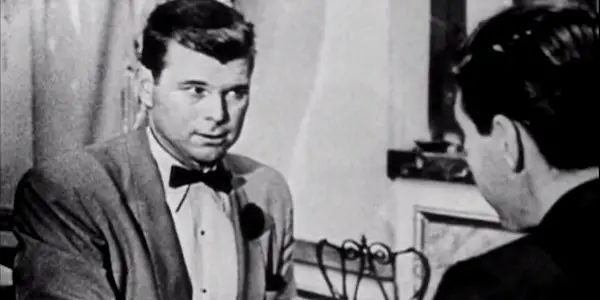
Conclusion
At an interminable 131 minutes, CR’67 eventually drags itself to a close, devolving into a literal sound and light show before everything explodes and everybody dies and goes to heaven (save for Jimmy Bond, who gets dragged down to hell). If this sounds like a “so bad, it’s good” kind of disaster, I assure you, it’s not. I cannot even recommend the film in any half-hearted manner. A couple of highlights save the film from being a totally useless affair, but a good score and one or two half-way decent gags do not a good film make. It’s insulting to moviegoers, it’s insulting to me, and it’s insulting to Bond.
For our next installment, we return to our regularly scheduled programming, which features trips to Japan and outer space. The No Time to Die Countdown will return with You Only Live Twice.
What are your thoughts on 1967’s Casino Royale? Let us know in the comments below!
Watch Casino Royale
Does content like this matter to you?
Become a Member and support film journalism. Unlock access to all of Film Inquiry`s great articles. Join a community of like-minded readers who are passionate about cinema - get access to our private members Network, give back to independent filmmakers, and more.
Movie lover & Los Angeles-based writer. BA in Film Criticism & Media Theory from CSU Northridge. Unofficial Bond ally. Rhymes with “tequila.”

